

During our second week in Italy, while still at the language school, we drove to Sartarelli Winery to pick up a couple bottles of verdicchio. We had visited this winery in 2018 and know we enjoy the wine. Marciello, the husband of the cooking instructor, commented to us that he felt Sartarelli verdicchios are some of the best examples of the wine. On the way back from the winery, we continued our tours of the little Italian villages (borghi).
The first one we stopped in was Montecarotto. The city center walls are certainly impressive. On the far side of the fountain, you can see Anne standing in a doorway. The clock in the tower was at the correct time, so they maintain it.

What looked to be the main church of the village has an unusual positioning. Most of the churches we see have their doors directly on one of the small streets of their village. A few open to small plazas. This church in Montecarotto opens to a tree-lined plaza.

The fact that the tower clock is maintained is not a surprise, we have learned. In the 1800s Montecarotto actually had a school of clock makers who specialized in tower clocks. In addition to the tower clock, the village has a very interesting looking astronomical clock. Unfortunately, it was covered up for maintenance during our visit. This clock, when not covered up, shows the time, the month, and the phase of the moon.
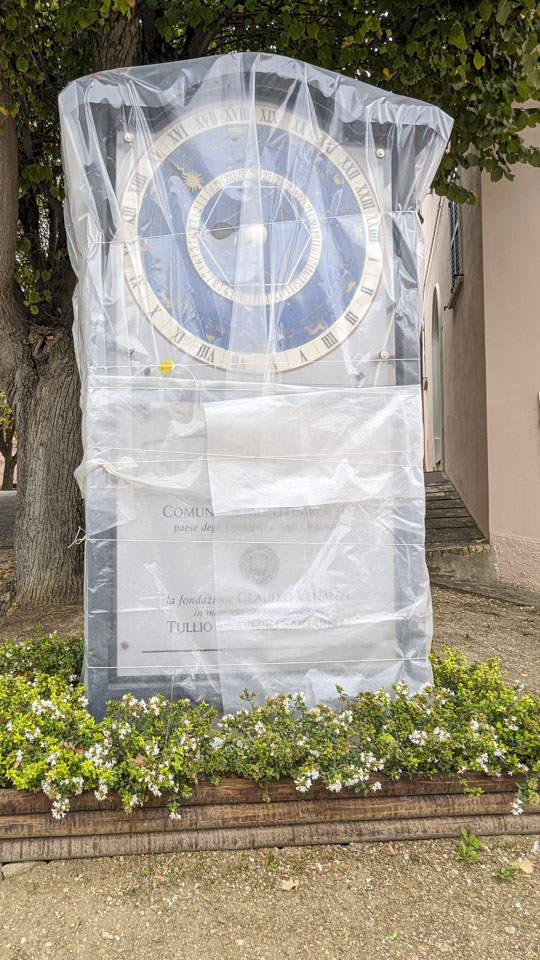
There was a very excited family in Montecarotto: Welcome, Thomas!

The next village on our drive home was Serra de' Conti. The population is around 3500, larger than some of the other area villages. The large tower near where we entered the city is being refurbished (this is what the sign on the door indicates). The tower is dedicated to the unification of Italy (per the marble plaque above the door). This clock did not show the correct time.

The slogan of Serra de' Conti is 'Città d'arte, della Cicerchia e del buon vino', The City of Art, of the Cicerchia and of good wine. Cicerchia are a relative of chickpeas but have to be prepared carefully to avoid toxicity. We did not know about them when we were there, so we did not try any food made with these beans. We did, however, see and hear some art. We heard a piano lesson at what looked to be a school in a converted convent. Nearby the school was this rather fun print; we did not see any information about it. A few items you might not notice immediately: there is a cat on the ground; the moon has the continents of Earth on it; in the distance is a nun in full habit standing next to an alien.
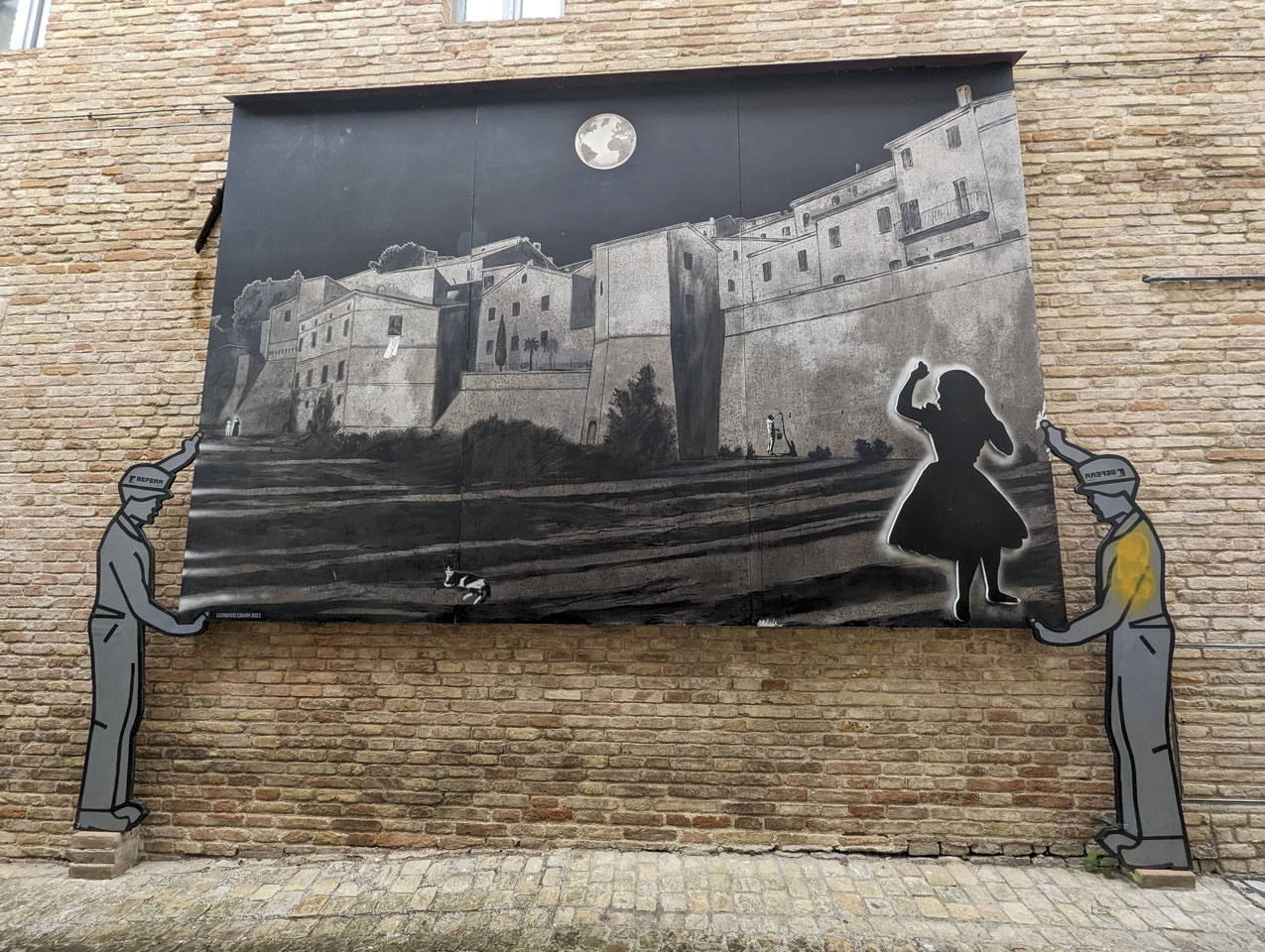
The village has the Museum of Monastic Art. This is a monastery (convent) that has been converted into a museum that shows what daily life of the nuns was like. This is probably why the nun was in the above print. Unfortunately, it was closed when we were there. The surrounding countryside is the typical attractive Le Marche countryside.
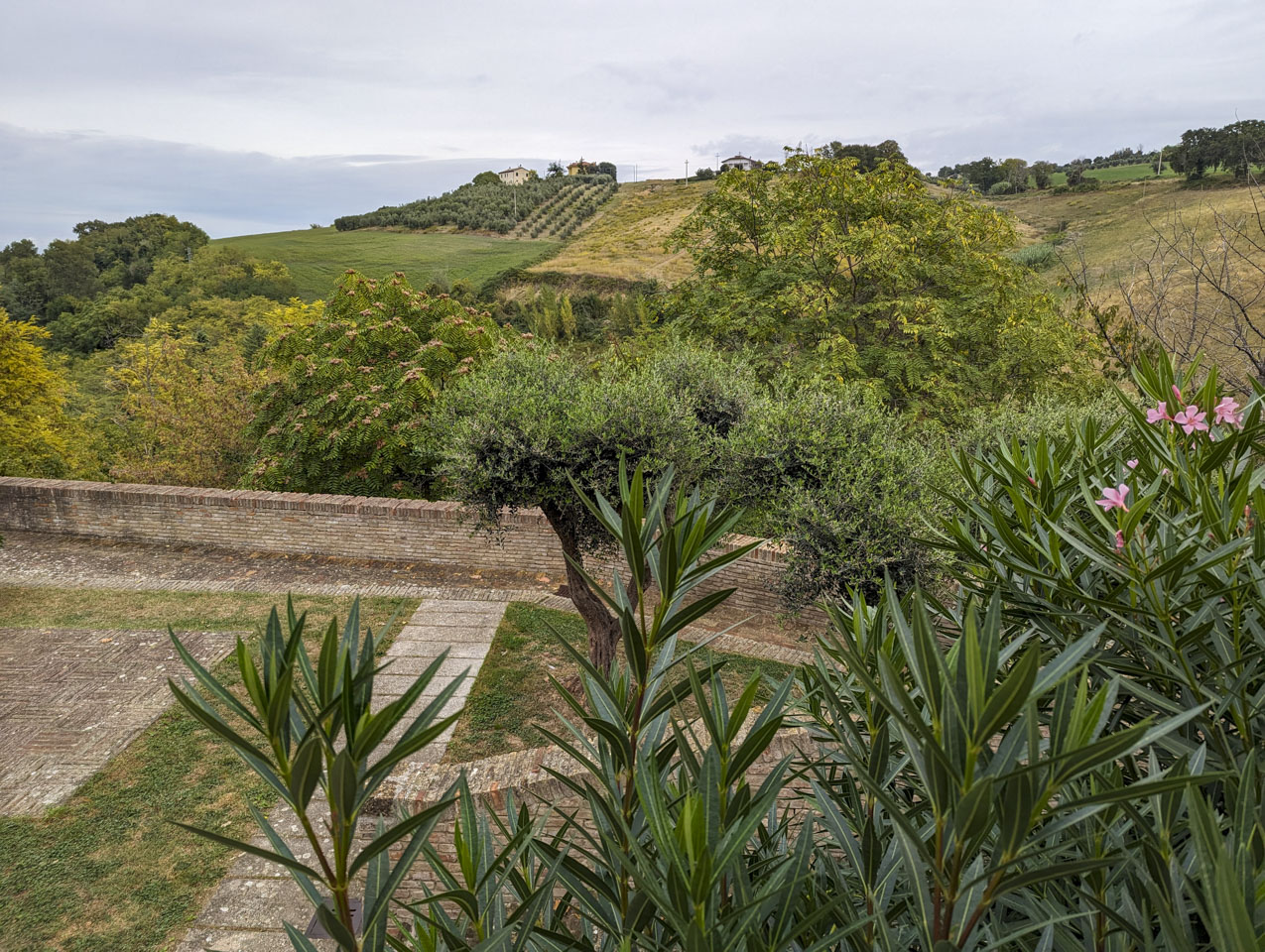
Lots of pigeons:
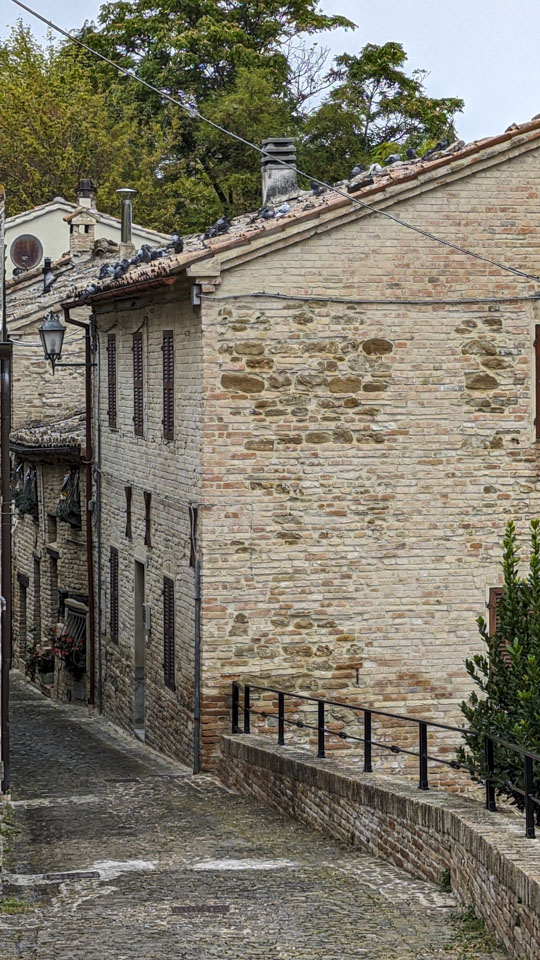
What is Paul taking a picture of?
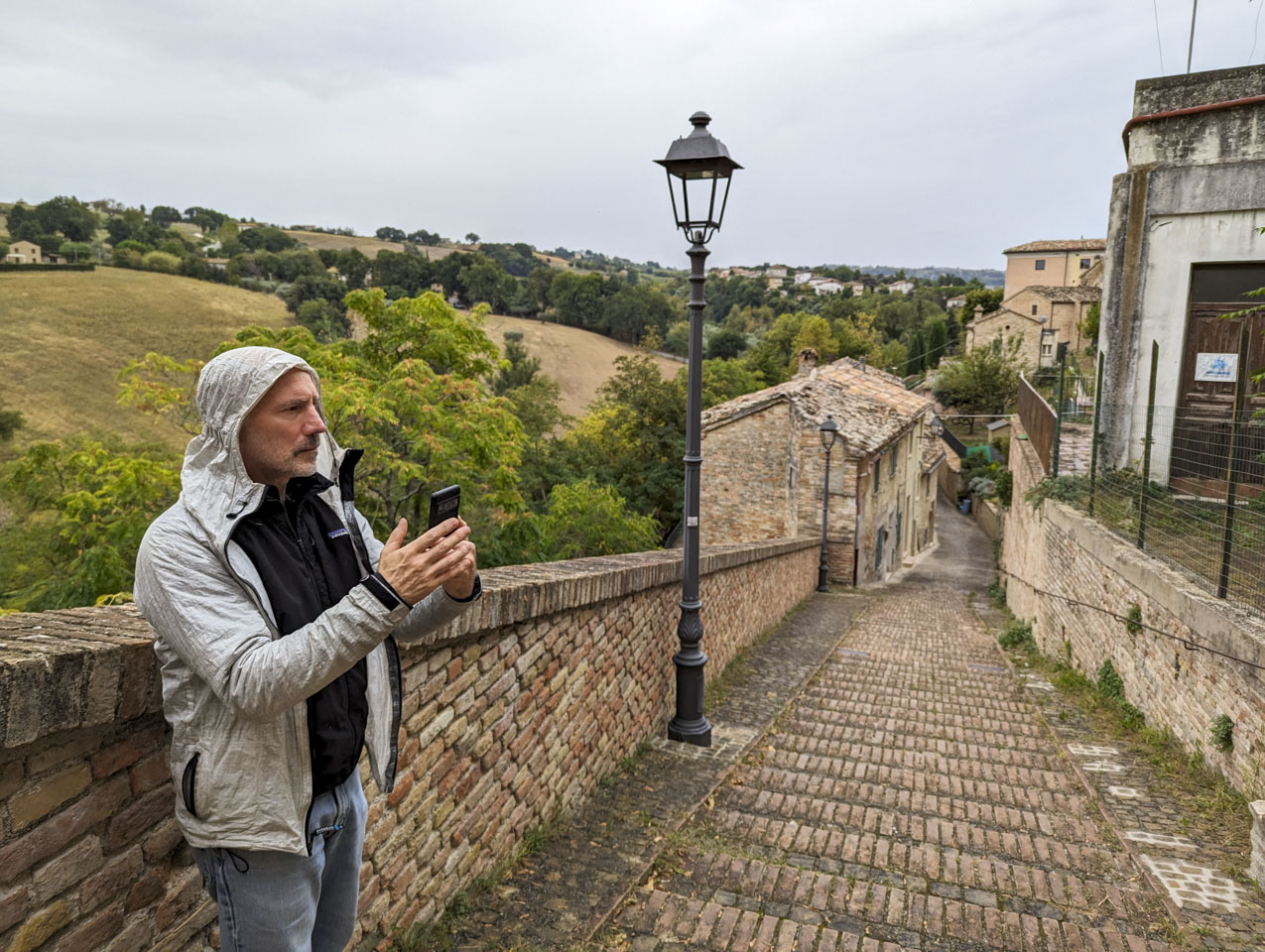
An alien! This is the fellow in the print we showed you earlier.
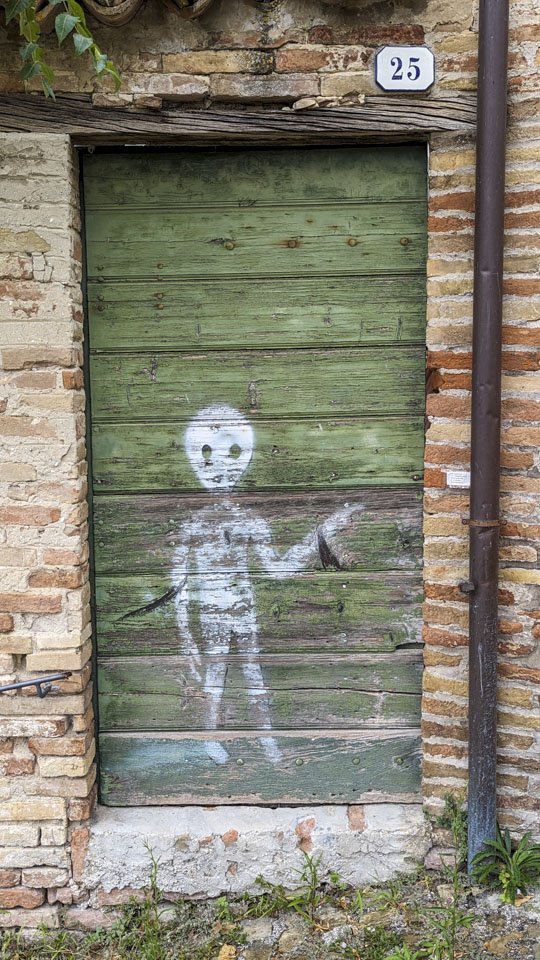
There is an old church in the village, Chiesa di Michele. This church is originally from 1290, redone in the 1400s. It is somewhat plain from the outside, with a pretty little entrance.
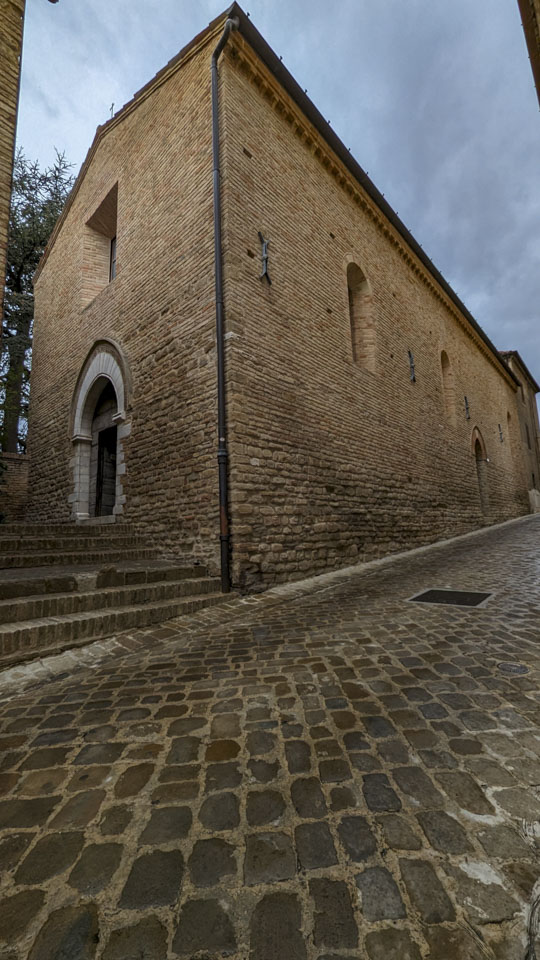

The interior of the church has the turnbuckles and rods in plain view, unlike many buildings that have them hidden in a ceiling or an attic area. At the far end of the church, in the altar area, they have an arched covering. The paintings on the walls are of various ages.

The work on the right of the above photo dates from 1574.
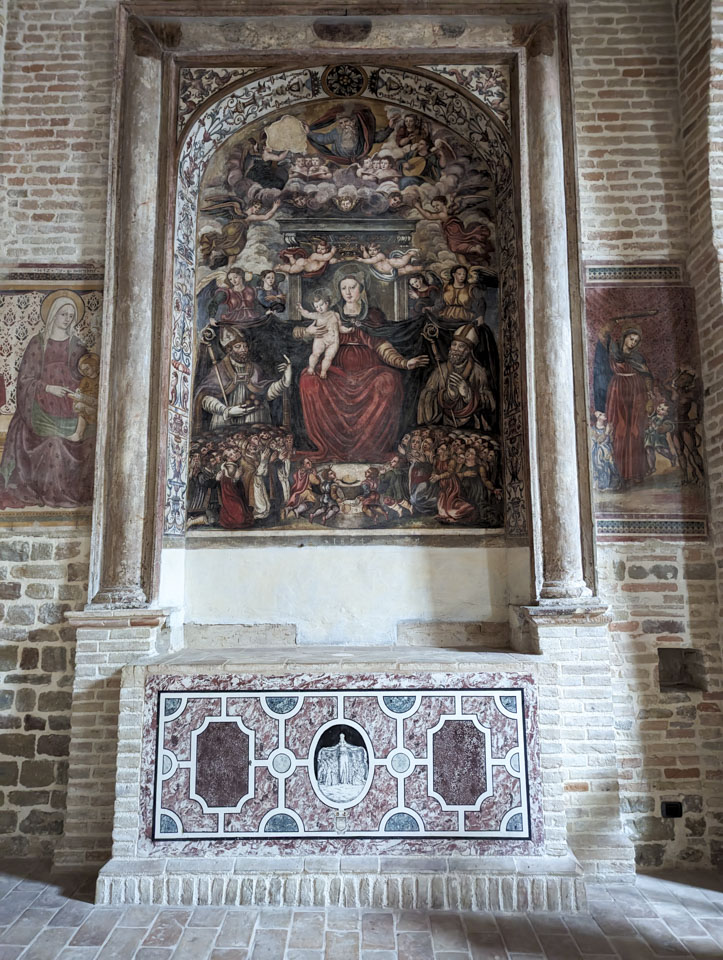
Just down the road from the church is the Porta Della Croce (Door of the Cross). The important part of this next photograph is of course the small black cat that is along the right side of the road. This cat was extremely friendly and would have liked us to stay there for a long time.
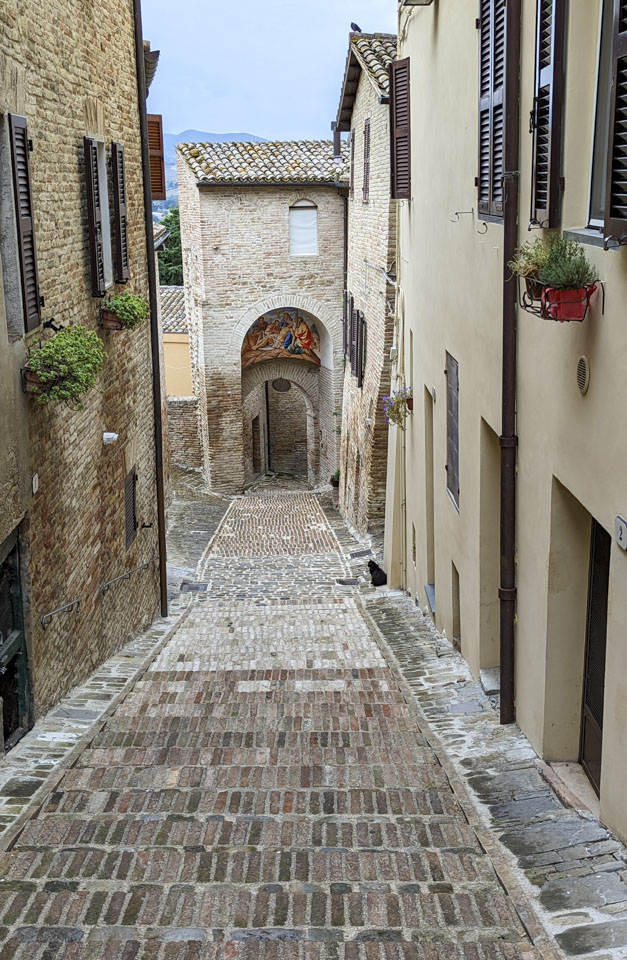
Here is Anne on the outside of the Porta Della Croce entrance to Serra de' Conti.

There was a nice little picnic area in the historic city center.

The last village we visited that day was Barbara. This village was pretty quiet (most of these villages are at the times we visit them). This entrance (actually an exit only if you go in with your car, which we did not) shows the old stone walls.

The main plaza has, like most villages in Italy, a monument to those lost in war. The list includes people from both World War I and World War II. While there was no sign that explained the imagery intended, it brings to mind a phoenix rising from (instead of flames) the suffering and sacrifice of those who died.
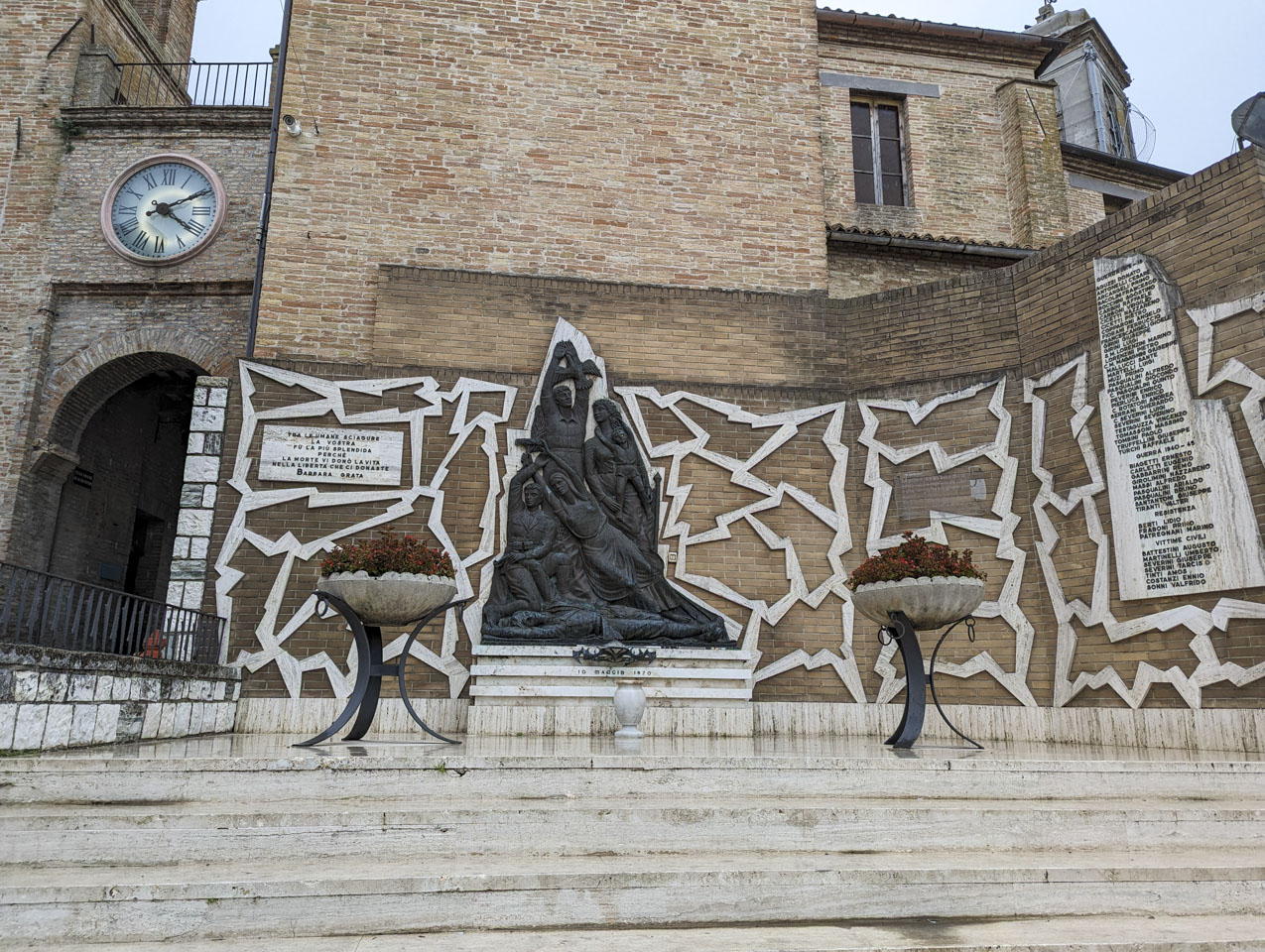
On the other side of the plaza is a house with some Trompe-l'œil art on the wall. The bench is actually a real bench.
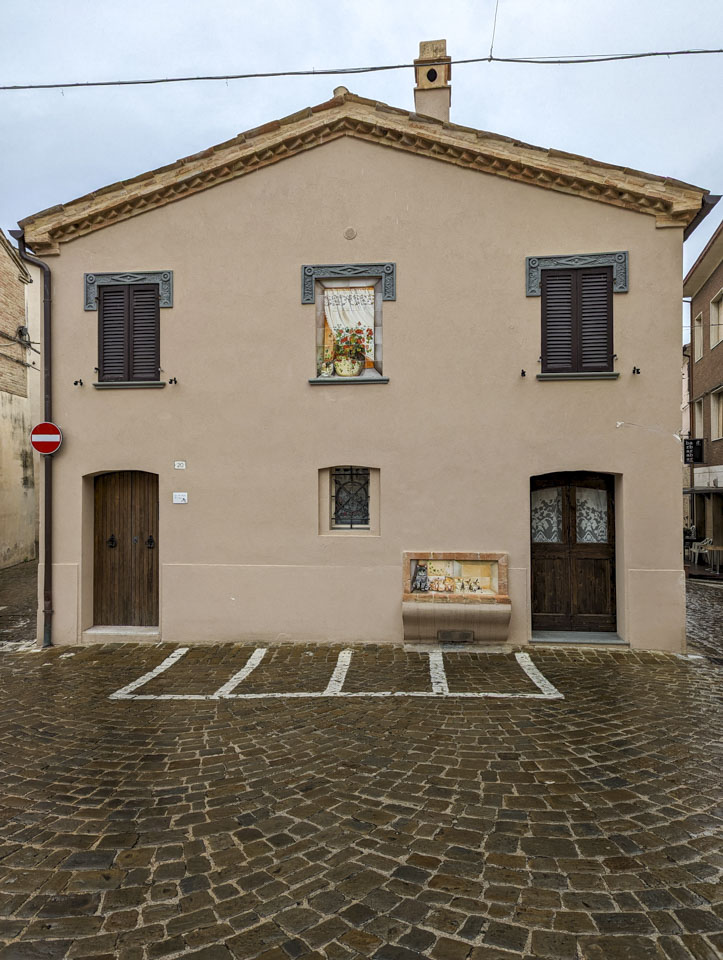
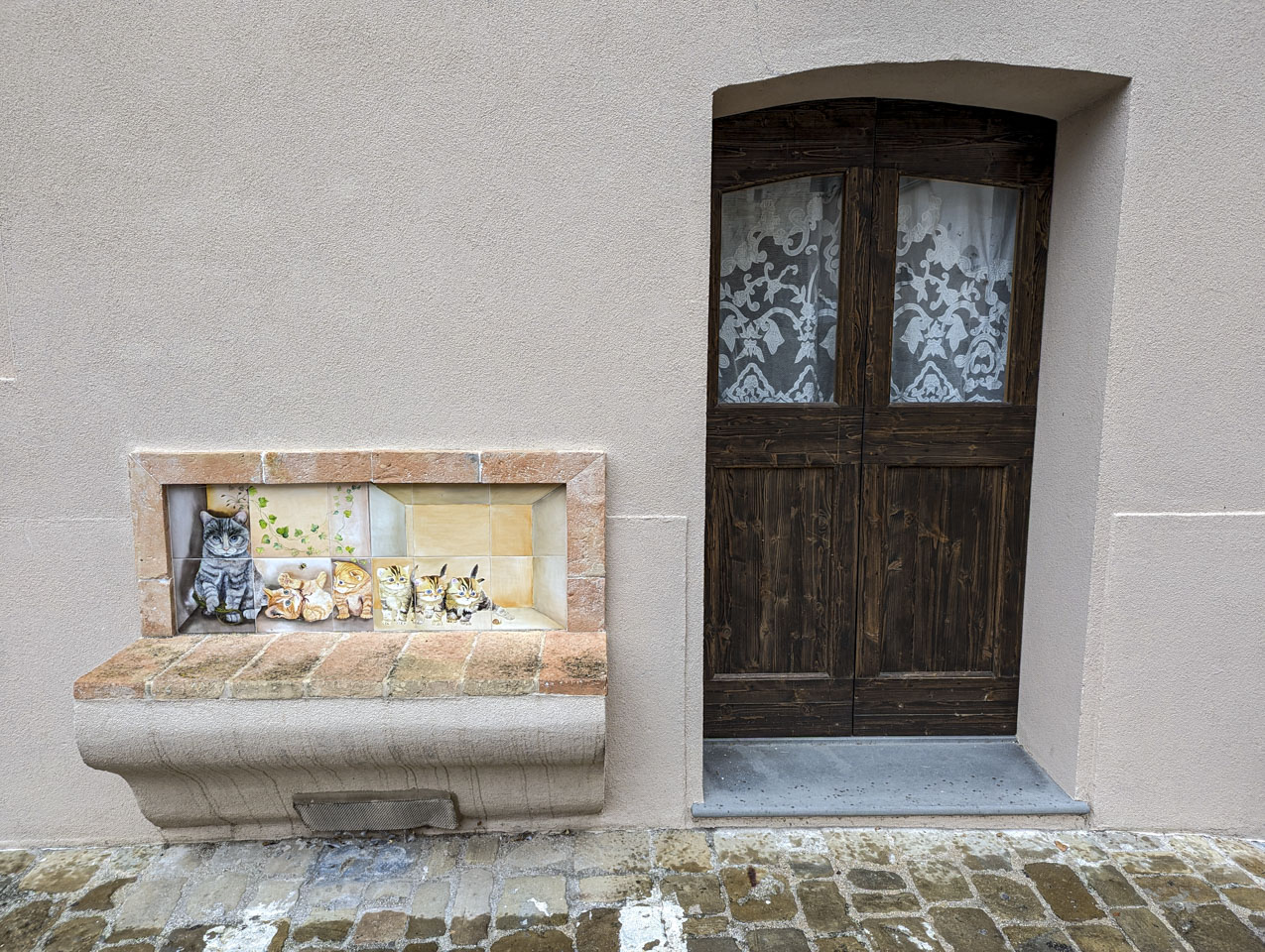
This view is not particularly stunning, but shows the cute little in-town yard someone has with young olive trees. And the next shows the view from a pedestrian entrance to the village.
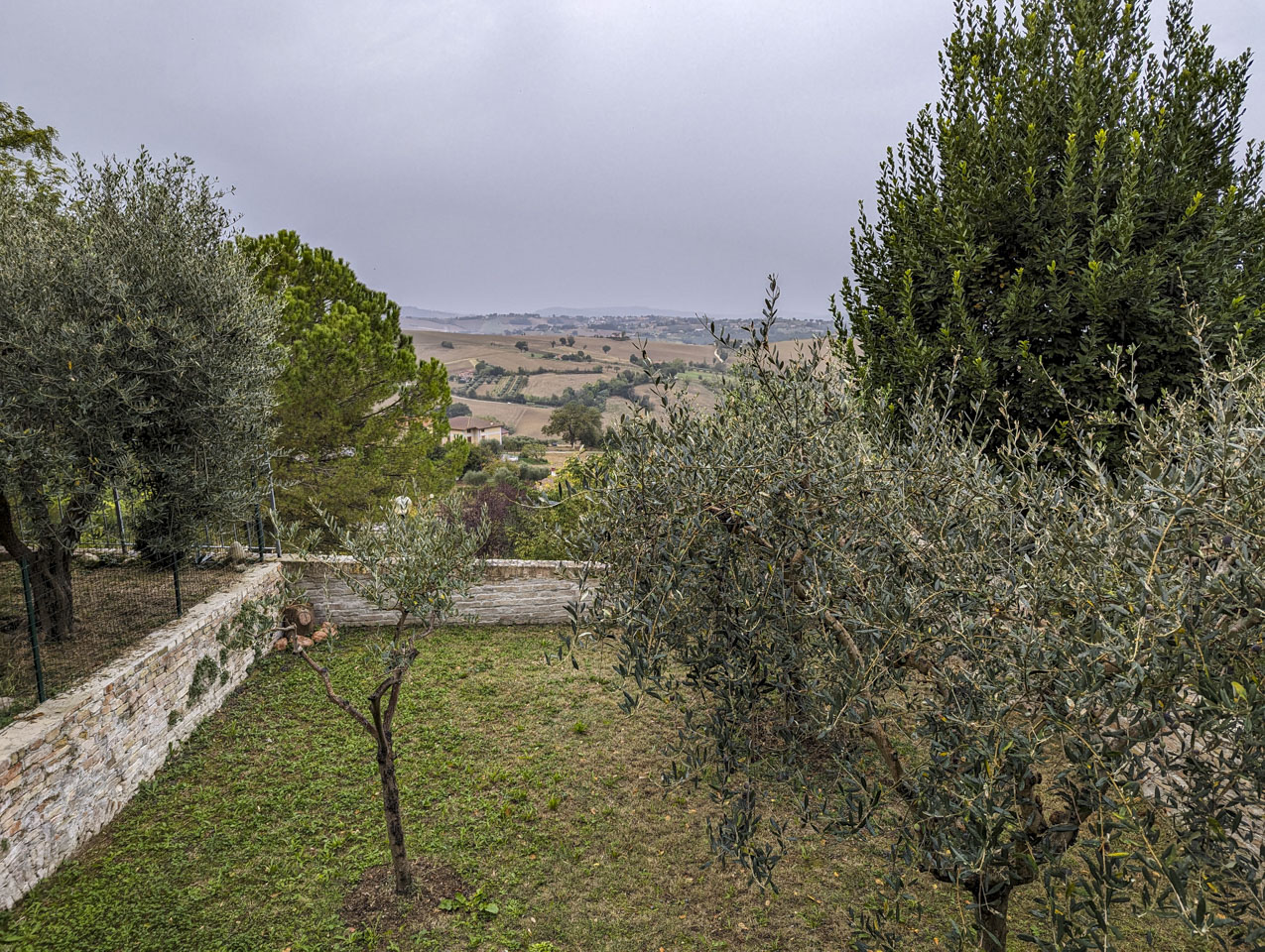
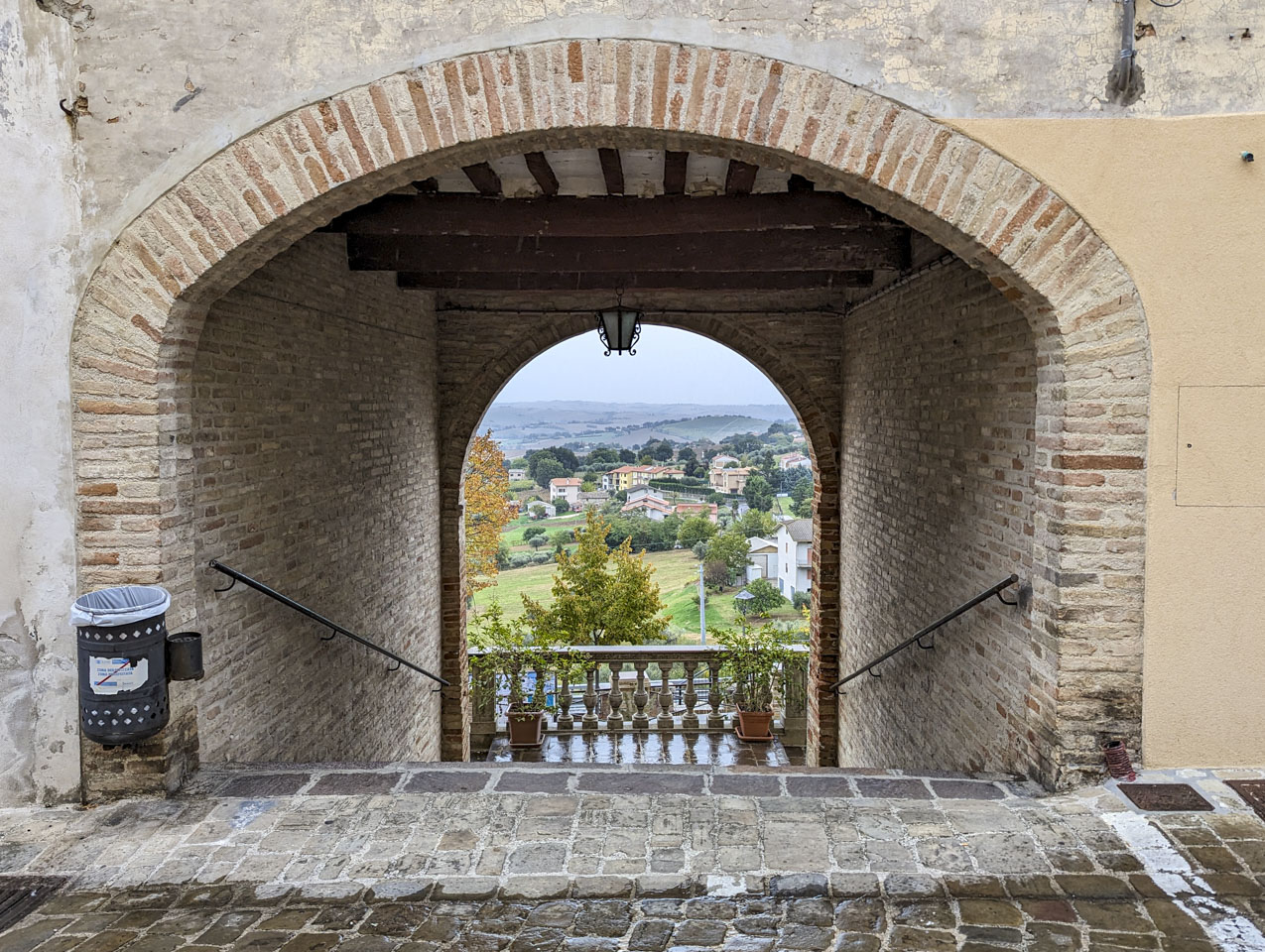
We arrived at the local bar just after they had closed, so we didn't have the opportunity to get some ciocolata calda on that slightly damp day. The bar has a very clever name, however.

In case you have difficulty reading it, the sign says 'ba-rb-ar-ab-ar'.
Updated May 2024